I clearly remember the days I started to hate EVs (Electric Vehicles). I had gone with a friend to pick up her daughter from a private school in Chester, the Range Rovers and Porsches that the Au Pairs and nannies drove, had been replaced with, yes you guessed it, Teslas. Here we go, I thought, saving the planet at a mere 100k a pop, that’s not going to work, it’s just one big exclusive club, how wrong I was!
Eight years later, I still collect old 80s and 90s turbo cars, we sponsor and work on a drag racing team, I still do a bit of Hill-climb racing in my home-built supercharged special and we sponsor a certain touring car driver (Mr Rowbo) so nothing would appear to have changed.

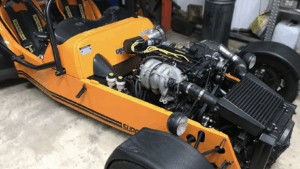
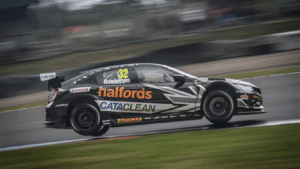
Look a bit closer and it has all changed. My perspective on motorsport and the internal combustion engine car and the future of the UK’s automotive industry has altered completely, and my daily driver is an entirely different matter altogether.
Things are changing, the EV revolution
A few years ago, I was watching an episode of Jay Leno’s Garage. Jay is a man after my own heart and undeniably one of the world’s biggest petrolheads. He made a very interesting comment,
“Internal combustion cars will become like the horse”.
He went on to explain “100 years ago horses were our main means of transportation, in our era horses are a hobby or for sport, this will be the same for internal combustion cars of today in the next decade everyday cars will be EVs either hydrogen-based fuel cell or battery technology, internal combustion will be for a hobby or sport! ”
I now share his sentiment, it’s been a struggle for me to love EVs but I can now see what it’s all about and why it is the future.
It should be clear to everyone, but just in case you missed it, the EV revolution has already started, and it didn’t really start with the Tesla Model S in 2014. Yes, Elon Musk made a very big and important point with Tesla, EVs can be fast and in some ways fun and different. Tesla moved some automotive technology on enormously, some bits were pieced together from other industries, but they were out of reach of most of us with a 100k price tag. Unfortunately for the automotive aftermarket, Tesla is a technology company making a car, not a car manufacturer making an EV. This meant Tesla is still essentially a closed network, opening gradually after several lawsuits in the EU to allow access to their data. Tesla claimed that they were a low-volume manufacturer that didn’t need to adhere to any emissions regulations and block exemption. This is an ongoing fight, however, Tesla has made diagnostics and training available to the aftermarket at a very high cost, obviously.
For most of us in the automotive aftermarket, the EV revolution really started with the first cheap affordable full EV car. It was quietly launched in 2011, the Nissan Leaf. It is as stylish a washing machine and as uninspiring as a ready meal, but unfortunately for us petrol lovers it is a good reliable, very cheap to run, practical vehicle for local runs. There are lots of Leafs registered in the UK, I bought one a couple of years ago as a training tool. The whole team ended up using it, one of my tech team who’s known to be “not the first person to open his wallet at the bar”, refused to give it up! The commute became a cost-saving exercise as he lives on a hill, and he enjoyed playing “how to get to work and generate extra miles for the way home”, further saving his electric bill at home and his fuel bills.
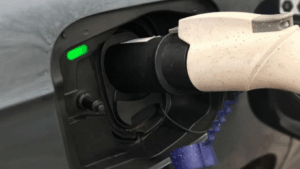
The arguments against full battery EVs are substantial and to be honest for long-distance drivers the issues currently outweigh the benefits. Unless you enter “smug mode“ and buy a Tesla with the only decent charging infrastructure countrywide. Number one on the list is range anxiety. Fundamental issues such as not enough high KW charging stations in the right place in the UK. I have first-hand experience with this, spending frustrating hours at so-called “EV charging points” when I am hooked up to an 11kw charger when I need 150kw. The difference being 15 hours of your life to charge a vehicle versus 40 minutes. Then being completely overcharged for the privilege of a high KW charger after fiddling with endless phone apps.
Here’s the thing, I use EVs and hybrids every day now, and I think I’ve worked out how to do it without causing myself anxiety or stress and I’ve learned to love them now.
My Electric Experience
Let’s go back to 2018, at the time my daily driver was a B7 RS4 Avant, the last of the great manual V8s, I spent a lot of time at our local shell station putting “super” in it and had a Greggs loyalty card. I found I was quickly getting fatter and much poorer owning an RS. I decided to sell it as it also consumed brakes, tyres and more importantly workshop time at a dramatic rate. I loved the noise so it was hard to say goodbye.
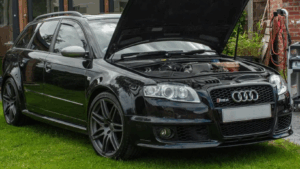
I started to use a pool car, our technical director’s ex-company car, a 2015 Mitsubishi PHEV or the company ‘milk float’ as I love to call it. It was only a little more exciting than a Leaf, but I realised it suited my life in some ways. I was soon taking delight in losing weight by visiting the Shell station once a month instead of three times a week. To explain, I walk my two German Shepherds every morning in the local nature reserve five miles away, and the total fuel cost: zero. Throughout the day running around local journeys, still zero. Driving to the mother-in-laws 40 miles away, the battery runs out around 20 miles. It then becomes a 2.0 petrol car towing a mountain of batteries, not so great but still 40 mpg overall.
It is still not an RS4, however, I considered many options whilst in the meantime our technical director ordered a Skoda Enyaq. It is half the price of an Audi E-Tron and is essentially an excellent car, with everything you need as long as you only need to do less than 260 miles in a day. I was really surprised by how much I liked it, it’s not trying to compete with a Tesla, it’s limited to 99mph, and it’s made by a car manufacturer, not a technology company. This means we all can work on them; I have already looked at the servicing and used my ODIS (VAG) tool on it and it all makes sense after being EV trained.
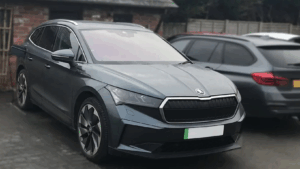
What’s my point?
My point is we all need to experience and will experience these vehicles sooner rather than later. The technology is not going backwards and you can’t rely on your old customers to carry on buying internal combustion engine cars, despite the battery and infrastructure issues. As most of your customers do have driveways to charge their cars on and probably travel less than a couple of hundred miles a day, they will be buying one sooner rather than later. Deals are already out there and MG have just brought out an affordable EV SUV that I’m told is taking the mobility market by storm.
My advice, buy one, drive one or just try one, look at its beauty (hmmm) book yourself on some training, learn to love them and more importantly keep loving petrol as a hobby or sport (especially V8s, superchargers & big turbos with nitrous to spool them up).
So when did I finally fall in love with them? When I needed something that outperformed my RS4, costs less than a Skoda Enyaq, does 70 mpg, goes 350 miles on 40 litres of fuel, is made of carbon fibre and is utterly bonkers looking, I bought a BMW i8
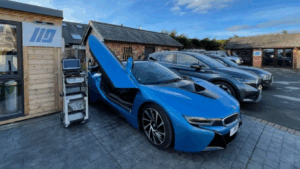
Unfortunately, I can’t get the dogs in it, so I still use the old ‘milk float’ every day.
